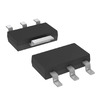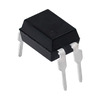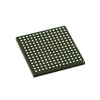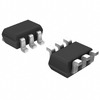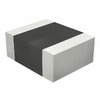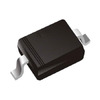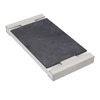LM3915 Dot/Bar Display Driver: Pinout, Circuit, and Datasheet
The LM3915 LED display driver, adeptly translates fluctuating audio signals into a visual format, enriching our understanding and interaction with sound. In this article, we delve into the LM3915’s functionalities, specifications, and applications.Catalog
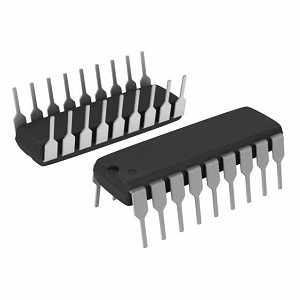
What is the LM3915?
The LM3915 integrated circuit skillfully transforms analog voltage levels into a visually engaging format spread over ten individual segments. These segments can be realized through LEDs, LCDs, or vacuum fluorescent displays, each step embodying a 3 dB increment for a logarithmic interpretation. This feature invites an intuitive grasp of rapid changes in audio, lighting, or power scenarios. A feature that stands out is the option for a bar graph or dot mode display, easily toggled with a single pin, showing the device’s flexibility in matching diverse preferences. Showcasing elevated adaptability, the LM3915 facilitates adjustable LED brightness without needing current-limiting resistors, functioning effectively over a power supply range from 3V to 25V. Its interior structure houses a precise voltage reference and a ten-step voltage divider, crafting a measurement accuracy that maintains less than a 1 dB deviation. This careful exactness satisfies applications demanding fine signal portrayal. Displaying a simplicity in design, the LM3915 operates with minimal additional components; a single resistor sets the full-scale voltage span from 1.2V to 12V, unaffected by power supply shifts.
LM3915 Pin Configuration

LM3915 Symbol, Footprint, and CAD Model

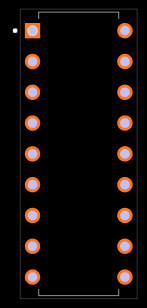

Features of the LM3915
• Displays 30 dB range in 3 dB steps.
• Supports bar and dot display modes.
• Operates on 3V to 25V single power supply.
• Internal voltage reference from 1.2V to 12V.
• Tolerates input voltages up to ±35V.
• Programmable current from 1mA to 30mA.
• Temperature range: 0°C to 70°C.
• High precision and stability for accurate measurements.
LM3915 Technical Specifications
Technical characteristics, properties, and parameters of the LM3915, including components with specifications comparable to the Texas Instruments LM3915N-1.
|
Type |
Parameter |
|
Mount |
Through Hole |
|
Mounting Type |
Through Hole |
|
Package / Case |
18-DIP (0.300, 7.62mm) |
|
Number of Pins |
18 |
|
Operating Temperature |
0°C~70°C |
|
Packaging |
Tube |
|
JESD-609 Code |
e0 |
|
Pbfree Code |
no |
|
Part Status |
Obsolete |
|
Moisture Sensitivity Level (MSL) |
1 (Unlimited) |
|
Number of Terminations |
18 |
|
ECCN Code |
EAR99 |
|
Terminal Finish |
Tin/Lead (Sn/Pb) |
|
Additional Feature |
SELECTABLE DOT MODE |
|
Max Power Dissipation |
1.365W |
|
Voltage - Supply |
3V~25V |
|
Terminal Position |
DUAL |
|
Number of Functions |
1 |
|
Terminal Pitch |
2.54mm |
|
Base Part Number |
LM3915 |
|
Pin Count |
18 |
|
Number of Outputs |
10 |
|
Output Voltage |
1.28V |
|
Configuration |
Dot/Bar Display |
|
Number of Circuits |
1 |
|
Operating Supply Current |
6.1mA |
|
Nominal Supply Current |
9.2mA |
|
Output Current |
30mA |
|
Power Dissipation |
1.365W |
|
Max Supply Current |
9.2mA |
|
Max Output Voltage |
1.34V |
|
Min Input Voltage |
3V |
|
Max Input Voltage |
25V |
|
Display Type |
LED, LCD, Vacuum Fluorescent (VF) |
|
Interface IC Type |
LED DISPLAY DRIVER |
|
Number of Segments |
10 |
|
Multiplexed Display Capability |
NO |
|
Display Mode |
BAR GRAPH |
|
Digits or Characters |
10 Steps |
|
Height |
3.3mm |
|
Length |
22.86mm |
|
Width |
6.35mm |
|
REACH SVHC |
No SVHC |
|
Radiation Hardening |
No |
|
RoHS Status |
Non-RoHS Compliant |
Block Diagram of the LM3915

Implementing the LM3915 for LED Displays
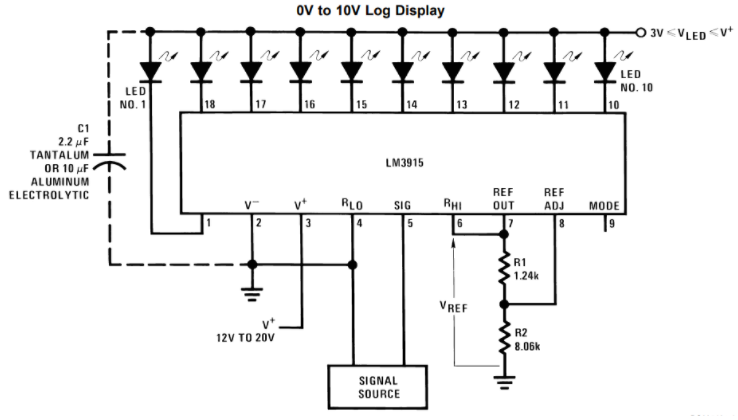
The inherent simplicity of the LM3915 makes it an attractive option for signal visualization endeavors. It requires only a few external elements, such as LEDs and resistors, simplifying its integration. In the audio signal representation, accurately setting reference voltages holds importance. For instance, with a peak audio voltage of 3.6V, adjusting RHI and REF OUT to match this level, while keeping RLO at 0V, is a precise setup that maintains equilibrium and ensures trustworthy signal monitoring. The ability to modify LED current and reference voltages presents with plentiful possibilities. Such adaptability enables customization to meet diverse display needs without facing burdensome engineering constraints. Adjusting current settings permits optimal brightness for varying lighting conditions, enhancing engagement. By judiciously fine-tuning these parameters, designs achieve precision and reliability, marked by seamless innovation tailored to distinct requirements.
Circuit with the LM3915
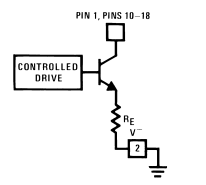
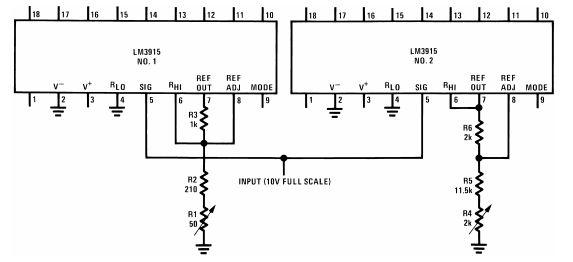

Applications of the LM3915
Audio Visualization
Audio visualization represents one of the most prominent fields where the LM3915 is employed. By shifting audio signals into visual forms, it offers an engaging way to monitor sound intensity and frequency spread. In practical scenarios, this involves incorporating the LM3915 into VU meters and visual equalizers. Such equipment proves highly beneficial during live performances, as audio feedback can dramatically enrich sound quality. With its dynamic response capabilities, the LM3915 adjusts display bars in sync with input signals, thereby enabling detailed management of audio parameters.
Battery Level Indication
The LM3915 excels in delivering definitive and trustworthy indications of battery levels. This is advantageous in portable devices where knowing the battery status bears implications. Visualizing battery charge via a series of LEDs grants quick and clear insights into battery condition. Such an arrangement mirrors battery monitoring systems used in demanding contexts, like navigational equipment, where staying aware of power reserves holds considerable weight.
Economical Monitoring Instruments
One notable application of the LM3915 is the development of cost-effective monitoring tools. Leveraging its scalable display capabilities allows the construction of varied monitoring systems, useful for measuring parameters such as temperature, electrical load, or ambient light. Its flexibility supports integration into multifunctional devices, delivering effective solutions without substantial investment. In environmental monitoring, the LM3915 can be tailored to reflect shifts in conditions, serving as a visual alert mechanism in settings like laboratories or greenhouses.
Mechanical Data of LM3915
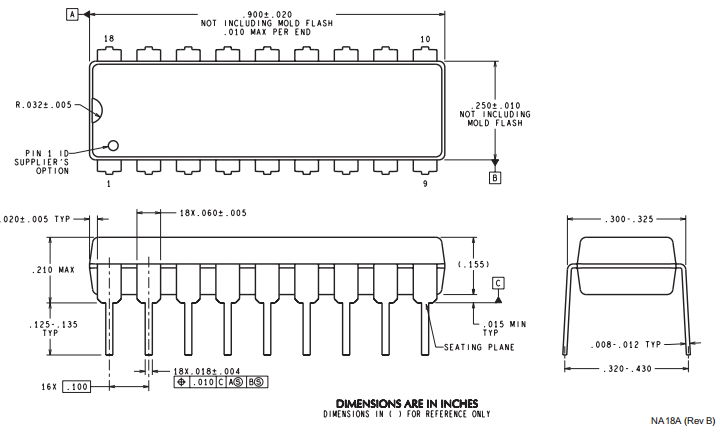
Manufacturer Information
Texas Instruments (TI), the creative force behind the LM3915, has carved a niche for itself in the vast realm of global technology. Specializing in semiconductors and circuits, TI focuses intently on embedded processing chips. This dedication reflects their pursuit of breakthroughs in chip technology, shaping the backbone of modern industries as they navigate the shifting landscapes of technological evolution with skill and foresight. TI embeds a spirit of endless creativity at the heart of its operations. This drive propels the design of groundbreaking semiconductor technologies, and guides shrewd strategic investments in research and development. Such endeavors have cultivated a wealth of patents, underscoring TI's prowess in spearheading developments while safeguarding the intellectual property that fuels its competitive stature. Texas Instruments demonstrates how leveraging deep-rooted in semiconductor technology can drive innovation with far-reaching global effects. By prioritizing sustainable progress through innovation and strategic acumen, TI maintains its prominence and leadership in a rapidly evolving industry, illuminating the path for future developments in technology and electronics.
Datasheet PDF
LM3915N-1 Datasheets:
About us
ALLELCO LIMITED
Read more
Quick inquiry
Please send an inquiry, we will respond immediately.
Frequently Asked Questions [FAQ]
1. What chip is LM3915? What is the role of it?
The LM3915 is an integrated circuit known for its heightened sensitivity, skillfully crafted to drive ten LEDs through the process of audio signal analysis. The operation's precision is adjustable via an external 50K resistor. This component finds its use in sound level meters and audio visualization systems, delivering a visual portrayal of audio amplitude, evoking a sense of immediacy and clarity in audio dynamics.
2. Can the LM3915 audio input terminal be directly connected to the output terminal of the voice control circuit?
The LM3915's input can directly interface with a voice control circuit's output. This connection transforms audio signals into a visually animated LED bar graph, enhancing systems where audio feedback provides cues. In practice, this configuration offers a captivating display of audio activity, demonstrating the component's versatility and adaptability in implementations.
3. What is the difference between LM3915 and LM3915N-1?
LM3915 and LM3915N-1 both offer the same pin configurations and functionality, differing only in their packaging. This structural consistency ensures seamless compatibility, accommodating diverse applications. Such uniformity aids in choosing the right model based on specific environmental needs and project criteria, providing flexibility without trade-offs.
4. What can be used instead of LM3915?
As a viable alternative, the ECG1509 can replace the LM3915 when component availability or particular specifications call for a different choice. Selecting a substitute involves considering power consumption, integrity of signal processing, and ease of integration. This flexibility supports a broader spectrum of projects, inviting innovative solutions while maintaining performance aesthetics.
5. Can LM3915 chips be used in circuits in parallel?
Though paralleling LM3915 chips is discouraged, expanding LED segments is feasible through sequentially cascading multiple units. This strategy manages an expanded array of LEDs, building intricate displays with refined resolution. Others employ these cascading methods to develop broad visual expressions, capturing detailed nuances in audio characteristics.

Guide to Using the 1N4448 Diode in Electronic Circuits
on November 14th
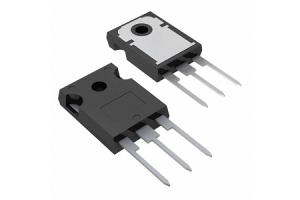
TIP142 Transistor: Pinout, Equivalent, and Datasheet
on November 14th
Popular Posts
-

What is GND in the circuit?
on January 1th 3232
-

RJ-45 Connector Guide: RJ-45 Connector Color Codes, Wiring Schemes, R-J45 Applications, RJ-45 Datasheets
on January 1th 2787
-

Understanding Power Supply Voltages in Electronics VCC, VDD, VEE, VSS, and GND
on November 19th 2557
-

Fiber Connector Types: SC Vs LC And LC Vs MTP
on January 1th 2246
-

Comparison Between DB9 and RS232
on January 1th 1861
-

What Is An LR44 Battery?
Electricity, that ubiquitous force, quietly permeates every aspect of our daily lives, from trivial gadgets to life-threatening medical equipment, it plays a silent role. However, truly grasping this energy, especially how to store and efficiently output it, is no easy task. It is against this background that this article will focus on a type of coin cell battery that may seem insignificant on the...on January 1th 1832
-

Understanding the Fundamentals:Inductance Resistance, andCapacitance
In the intricate dance of electrical engineering, a trio of fundamental elements takes center stage: inductance, resistance, and capacitance. Each bears unique traits that dictate the dynamic rhythms of electronic circuits. Here, we embark on a journey to decipher the complexities of these components, to uncover their distinct roles and practical uses within the vast electrical orchestra. Inductan...on January 1th 1786
-

CR2430 Battery Comprehensive Guide: Specifications, Applications and Comparison to CR2032 Batteries
What is CR2430 battery ?Benefits of CR2430 BatteriesNormCR2430 Battery ApplicationsCR2430 EquivalentCR2430 VS CR2032Battery CR2430 SizeWhat to look for when buying the CR2430 and equivalentsData Sheet PDFFrequently Asked Questions Batteries are the heart of small electronic devices. Among the many types available, coin cells play a crucial role, commonly found in calculators, remote controls, and ...on January 1th 1771
-

What Is RF and Why Do We Use It?
Radio Frequency (RF) technology is a key part of modern wireless communication, enabling data transmission over long distances without physical connections. This article delves into the basics of RF, explaining how electromagnetic radiation (EMR) makes RF communication possible. We will explore the principles of EMR, the creation and control of RF signals, and their wide-ranging uses. The article ...on January 1th 1763
-

Comprehensive guide to hFE in transistors
Transistors are crucial components in modern electronic devices, enabling signal amplification and control. This article delves into the knowledge surrounding hFE, including how to select a transistor's hFE value, how to find hFE, and the gain of different types of transistors. Through our exploration of hFE, we gain a deeper understanding of how transistors work and their role in electronic circu...on November 19th 1751








